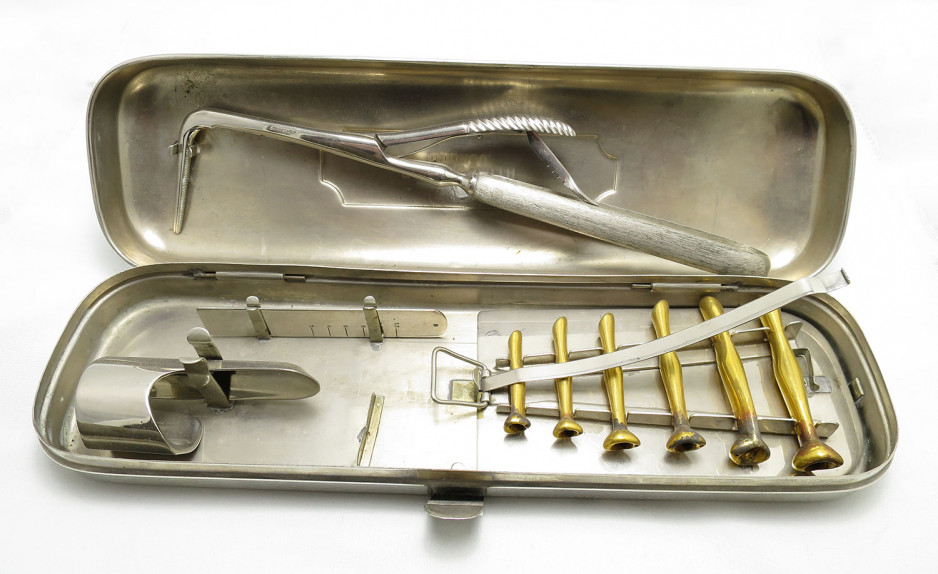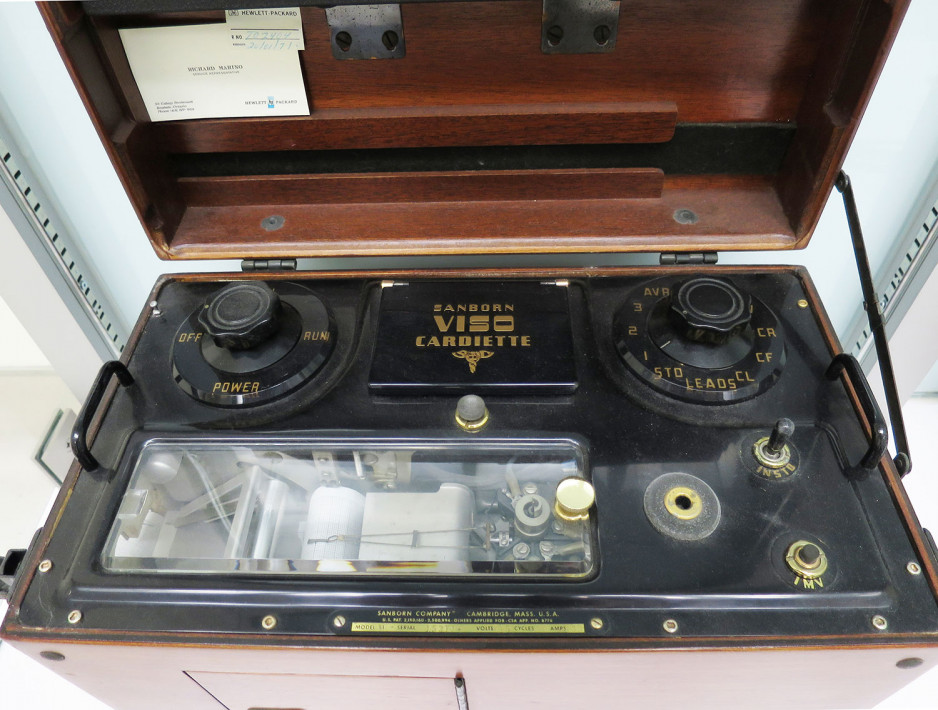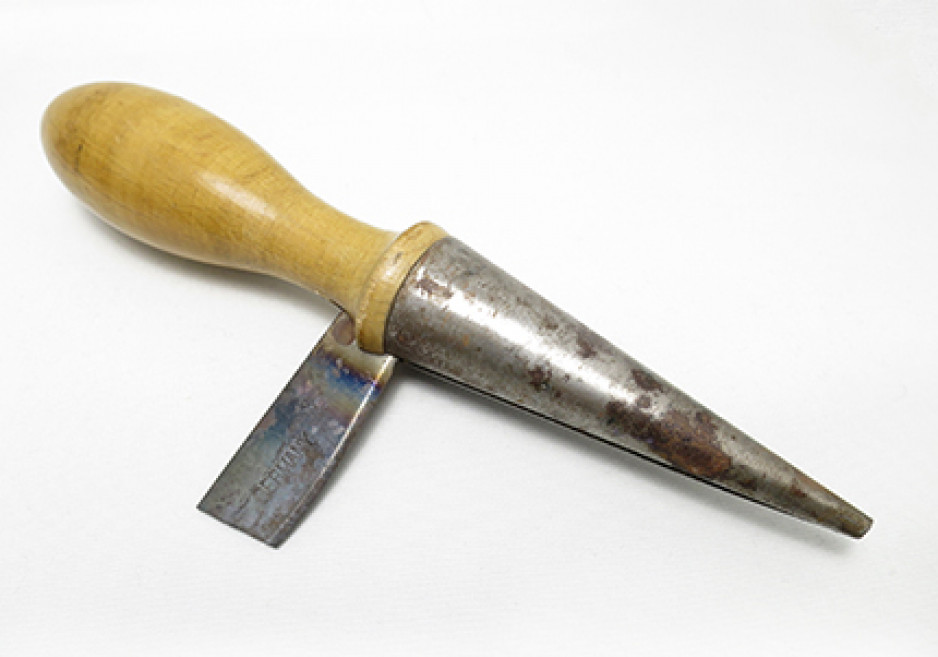A Passion for Our Past
St. Joseph’s history is rich with the experience of compassionate care, innovative research and teaching the next generation of care providers. This illustrious legacy is woven into the fabric of St. Joseph’s and tangible in the artifacts on display in the current exhibit of St. Joseph’s Hospital and Nursing School Artifact Collection in the heritage exhibit space at St. Joseph’s Hospital.
From needle-sharpening stones to portable electrocardiographs, the collection highlights the painstaking and pioneering efforts of St. Joseph’s physicians, scientists and nurses to put their patients first. Among the items hinting at bygone times is a complicated metal intubation set (circa 1915), which required assembly and sterilization prior and after use, and a circa 1930s drying oven used to remove moisture from chemicals during the lengthy process of medication preparation.
The labourious efforts to ensure the wellbeing of the sick are evident not only in the artifacts themselves but in the care taken with these artifacts and their stories.
“There have always been people interested in preserving the history of St. Joseph’s over the decades,” says Noelle Tangredi, an eLearning developer and graphic designer with Organizational Development and Learning Services. “I happened to find out about boxes full of artifacts in storage and made it my mission to get them organized and have a way to share them with the staff and community.”
Noelle and a few other employees – now retired – worked on getting an exhibit space approved and display cabinets purchased, as well as a proper storage and workspace for the collection. The first exhibit opened in April of 2016 and since then, Noelle, a long-time employee of St. Joseph’s, has become the sole caretaker of the collection.
A voluntary labour of love born of a passion for preserving the past, Noelle often works on the collection outside of work hours. She receives invaluable assistance from Mary Kosta, Congregational Archivist for the Congregation of The Sisters of St. Joseph in Canada, along with Mary’s practicum students, to clean, catalogue, photograph, research and properly store the artifacts.
Since older documents and photographs require a special environment to be maintained, they become part of the congregation archives. The rest of the artifact collection is housed in a storage room at St. Joseph’s Hospital, which also contains a work area. A few times a year, Noelle curates an exhibit using the artifacts and research for her inspiration.
“Our collection only contains artifacts that have a direct connection to St. Joseph’s Hospital or St. Joseph’s Nursing School,” explains Noelle. “Many of the collection items come from donations from the community, but some come from our Environmental Services or Facilities Management teams having found things left behind in treatment rooms or offices.”
One such artifact is a portable electrocardiograph, recovered from a closet in an empty office at St. Joseph’s Hospital. This device, housed in a small wooden cabinet, dates back to the 1950s and creates a printout of the patient’s heartbeat. The device inscription indicates it was developed by an American manufacturer for Dr. B.L. Hession, a Western University graduate and St. Joseph’s first post-war specialist in internal medicine. Dr. Hession was Chief of Medical Staff from 1956 to 1959 and continued teaching and seeing patients until his retirement in 1973. A lecture room was later named in his honour, and The Dr. B. Lloyd Hession Memorial Fund Award continues to be dispersed by St. Joseph’s Health Care Foundation to a resident in internal medicine of high academic standing who demonstrates exceptional ability in education and leadership.
Another interesting find is the cork borer sharpener – an instrument used to maintain the sharpness of laboratory instruments called cork borers. A cork borer was a metal tool for cutting a hole in cork or rubber to insert glass tubing, or for cutting and making tube or bottle stoppers. The cork borer sharpener was used to hone the cutting edge of the borer to facilitate slicing through cork or rubber.
Not all artifacts are used to provide care or conduct research. The exhibit also features a set of postcards and notes from former patients and residents of St. Joseph’s Hospital from the first half of the twentieth century.
A note on the back of a framed print speaks of a young patient’s harrowing battle with illness in the hospital prior to World War II. The patient was only 10 years old when she was admitted to St. Joseph’s Hospital in 1936 for strep throat and rheumatic fever. She spent nearly a year recovering at the hospital under the care of Dr. Hubert Loughlin, a well-respected paediatrician, who was Chief of Paediatrics from 1948 to 1963. The patient's sentiments about her illness and her “year spent in bed” are noted in ink.
“A terrible experience for a 10-year-old. Missed a lot of school, which I loved. Perhaps made me a special person, as I came through it all.”
Those coming to St. Joseph’s Hospital for a medical appointment are invited to view the history of St. Joseph’s on display while they are in the building. The exhibit space can be found in Zone A, Level 1, off the main corridor closest to Richmond Street.
Have you uncovered any intriguing artifacts or stories related to the history of St. Joseph’s or the St. Joseph’s Nursing School? Interested in donating to the collection? Please email Noelle.Tangredi@sjhc.london.on.ca.

















